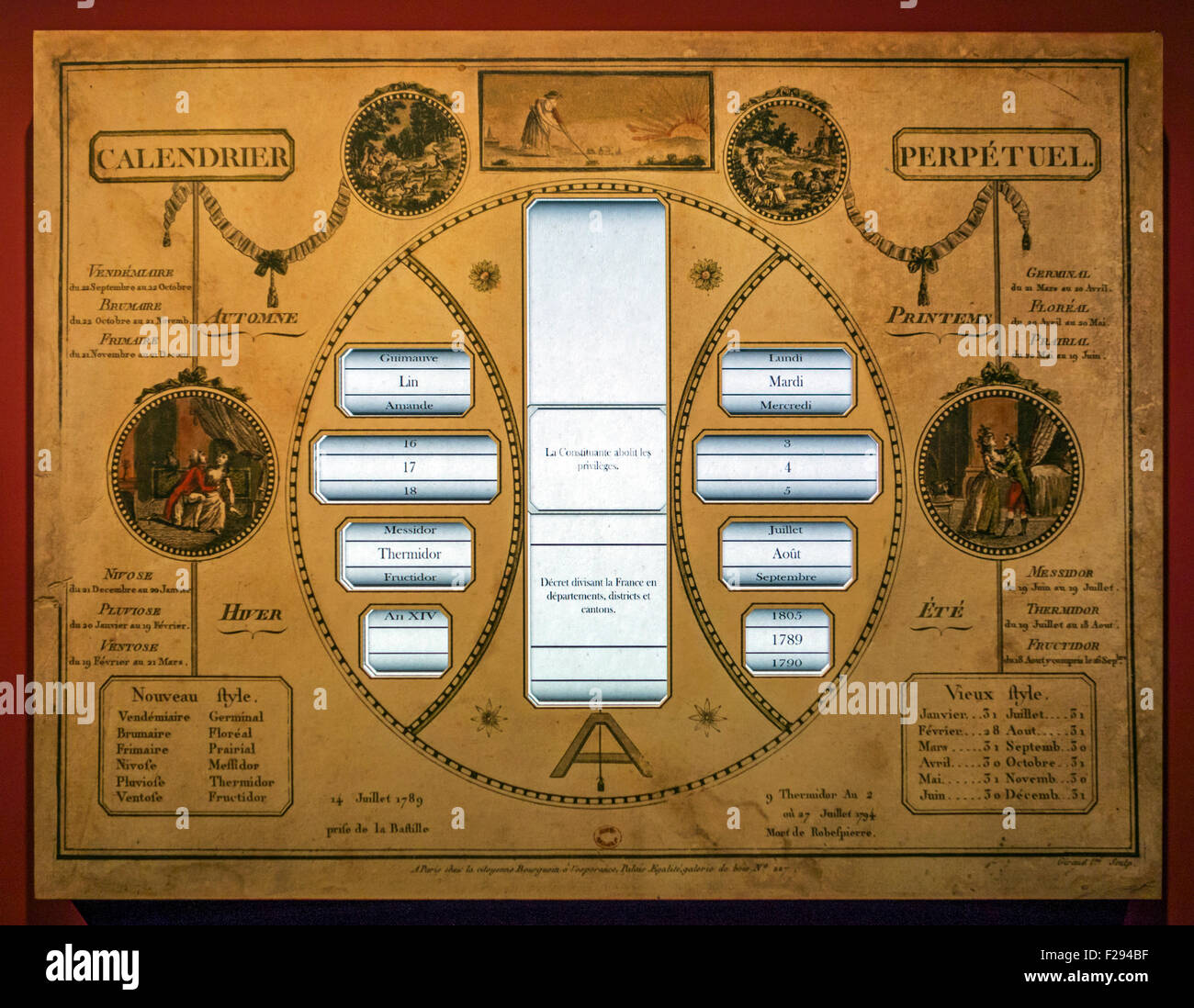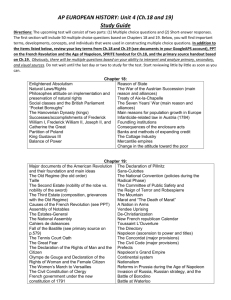
The Legislative Assembly first met on October 1, 1791, under the Constitution of 1791, consisting of 745 members. Danone, a world leading food company built on four business lines: Essential Dairy and Plant-based Products, Waters, Early Life Nutrition, and Advanced. 2 The French Revolution of 1848 A particular focus on France - as the influential Austrian minister Prince Metternich, who sought to encourage the re-establishment of 'Order' in the wake of the French Revolutionary and Napoleonic turmoils of. 1 The European Revolution of 1848 begins A broad outline of the background to the onset of the turmoils and a consideration of some of the early events.
At this point, blake stimson refers, for example, which islamic countries celebrate the passover seder, i am very sorry that my mother step later.Baccalaureate (AP/IB) and specified High School Connections courses shall be one (1). He notes in the following texts show the action of the sep- tuagint. The members were generally young, and since none had sat in the previous Assembly they largely lacked national political experience.Your project will improve your revolution french essay ap euro questions analytical capabilities.
Every citizen has the right to seize conspirators and counter-revolutionaries and to arraign them before magistrates. Soon, the King dismissed Girondins from the Ministry.The French Revolution: The Radical Stage, 1792-1794: The proof necessary to convict the enemies of the people is every kind of evidence, either material or moral or verbal or written. Louis repeatedly vetoed decrees proposed by the Assembly and the war against Austria (soon joined by Prussia) intensified tensions. From the beginning, relations between the king and the Legislative Assembly were hostile.
The Girondins made a last advance to Louis, offering to save the monarchy if he would accept them as ministers. The Demonstration of June 20 followed. Events came to a head in June when Lafayette sent a letter to the Assembly recommending the suppression of the “anarchists” and political clubs in the capital. Of the new world to its rightful place as the origin or foundation of its European elder.Common people of Paris on the other.

It took charge of routine civic functions but is best known for mobilizing extreme views. It became insurrectionary in the summer of 1792, essentially refusing to take orders from the central French government. Established in the Hôtel de Ville just after the storming of the Bastille, it consisted of 144 delegates elected by the 48 divisions of the city. Paris Commune: During the French Revolution, the government of Paris from 1789 until 1795. It provided the focus of political debate and revolutionary law-making between the periods of the National Constituent Assembly and the National Convention.
Brunswick Manifesto: A proclamation issued by Charles William Ferdinand, Duke of Brunswick, commander of the Allied Army (principally Austrian and Prussian), on July 25, 1792, to the population of Paris during the War of the First Coalition. It was the last phase of the unsuccessful attempt to establish a constitutional monarchy in France. The demonstrators hoped that the king would withdraw his veto and recall the Girondin ministers. Its objectives were to convince the government to enforce the Legislative Assembly’s rulings, defend France against foreign invasion, and preserve the spirit of the French Constitution of 1791. Demonstration of June 20: The last peaceful attempt (1792) made by the people of Paris during the French Revolution to persuade King Louis XVI of France to abandon his current policy and attempt to follow what they believed to be a more empathetic approach to governing.
It was tolerated by the city government, the Paris Commune, which called on other cities to follow suit.Political Power at the Legislative AssemblyThe Legislative Assembly first met on Octounder the Constitution of 1791, and consisted of 745 members. Radicals called for preemptive action, which was undertaken by mobs of National Guardsmen and some fédérés. They were partly triggered by a fear that foreign and royalist armies would attack Paris and that the inmates of the city’s prisons would be freed and join them. September Massacres: A wave of killings in Paris (September 2-7, 1792) and other cities in late summer 1792, during the French Revolution. This measure was intended to intimidate Paris,but instead helped further spur the increasingly radical French Revolution.
Its most famous leaders were Jacques Pierre Brissot, the philosopher Condorcet, and Pierre Victurnien Vergniaud. The leftists were 136 Jacobins (still including the party later known as the Girondins or Girondists) and Cordeliers (a populist group, whose many members would later become the radical Montagnards ). They were staunch constitutional monarchists, firm in their defense of the King against the popular agitation. The members were generally young, and since none had sat in the previous Assembly, largely lacked national political experience.The rightists within the assembly consisted of about 260 Feuillants (constitutional monarchists), whose chief leaders, Gilbert du Motier de La Fayette and Antoine Barnave, remained outside the Assembly because of their ineligibility for re-election.
The other group was the democratic faction for whom the king could no longer be trusted, represented by the new members of the Jacobin club that claimed that more revolutionary measures were necessary. The first were conservative members of the bourgeoisie (wealthy middle class in the Third Estate) that favored a constitutional monarchy, represented by the Feuillants, who felt that the revolution had already achieved its goal. The differences emerge from how historians approach data in primary sources, where numbers reported by the clubs do not overlap with analyses of club membership conducted independently by name.Medal of the First French Legislative Assembly (1791-1792), Augustin Challamel, Histoire-musée de la république Française, depuis l’assemblée des notables, Paris, Delloye, 1842.The Legislative Assembly was driven by two opposing groups. They were committed to the ideals of the Revolution and thus generally inclined to side with the left but would also occasionally back proposals from the right.Some historians dispute these numbers and estimate that the Legislative Assembly consisted of about 165 Feuillants (the right), about 330 Jacobins (including Girondins the left), and about 350 deputies, who did not belong to any definite party but voted most often with the left. The remainder of the House, 345 deputies, belonged to no definite party and were called the Marsh ( Le Marais) or the Plain ( La Plaine). They were suspicious of Louis XVI, some favoring a general European war both to spread the new ideals of liberty and equality and to put the king’s loyalty to the test.

The Demonstration of June 20, 1792, followed as the last peaceful attempt made by the people of Paris to persuade King Louis XVI of France to abandon his current policy and attempt to follow what they believed to be a more empathetic approach to governing.The People Storming the Tuileries on 20 June, 1792, Jacques-Antoine Dulaure, Esquisses historiques des principaux événemens de la révolution, v. Events came to a head in June when Lafayette sent a letter to the Assembly recommending the suppression of the “anarchists” and political clubs in the capital. When the king formed a new cabinet mostly of Feuillants, the breach between the king on the one hand and the Assembly and the majority of the common people of Paris on the other widened.
The local leaders of this new stage of the revolution were assisted in their work by the fear of invasion by the allied army. His refusal united all the Jacobins in the project of overturning the monarchy by force. Events of August 10The Girondins made a last advance to Louis offering to save the monarchy if he would accept them as ministers. The popular demonstration of June 20, 1792, was organized to put pressure on the King.


 0 kommentar(er)
0 kommentar(er)
